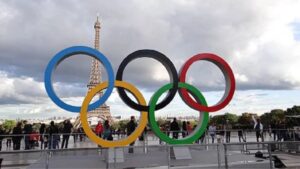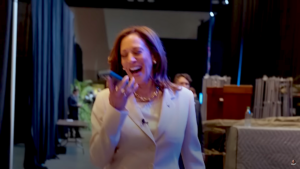
Published 10/06/2023 16:48 | Edited 6/12/2023 1:28 PM
The Colombian government and the National Liberation Army (ELN) guerrilla group announced this Friday (9) the implementation of a ceasefire that will last for six months and should start from the 6th of July. The decision is one of the three parts of an agreement signed by both delegations in Havana, the capital of Cuba, during an act that marked the end of the third cycle of dialogues between the Colombian State and the armed group.
With the presence of President Gustavo Petro and the first commander of the ELN, Antonio García, who went to Havana to participate in the event, the representatives signed the agreement that represents the greatest advance, so far, in the peace negotiations. The bilateral ceasefire was one of the most awaited announcements and will come into effect from July 6th. The parties also announced that on July 10, meetings will be held to approve the protocols drawn up for that period.
The second point of the agreement is preparations for the participation of Colombian civil society in building the peace process through a call for the formation of work teams. In addition, the negotiators announced that the fourth cycle of dialogues will take place between August 14 and September 4, in Venezuela.
Petro arrived in Havana on Thursday night (8), in the midst of a crisis in the government and clashes with the right wing that is blocking the president’s reforms in Congress. Meanwhile, guerrilla commander Antonio García arrived in Cuba on June 7, after the Colombian Attorney General’s Office lifted the arrest warrants against him at Petro’s request.
Speaking this Friday after the signing of the agreement, the president stipulated a deadline of May 2025 for the dialogues to definitively end the conflict between the ELN and the Colombian State, which has lasted 60 years. “The world of weapons and deaths, with this eternal war of decades, must end. The violence we’ve lived through for generations, which we’ve been a part of but which we’ve tried to overcome, must end. With this we will not be able to build a nation, because a nation is a pact between its members, ”he said.
García, for his part, said he had confidence in the current process, but pondered that the ELN expects concrete changes that will put an end to persecution, which has not happened, according to the guerrilla leader, on other occasions. “We are aware that we did not sign substantial agreements, we signed procedural agreements, but we cannot repeat old stories, we have many peace processes that only ended with demobilization and disarmament and things remained the same”, he said.
ELN x State: history of a conflict
Founded in 1964 by a group of students influenced by the Cuban Revolution and Liberation Theology, the ELN declares that its main objective is the transformation of society and the economy of Colombia through the struggle against “big capital” and the “Colombian oligarchy”. ”. On the other hand, the ELN is considered a “terrorist group” by the European Union, the United States and some Latin American states.
Currently, the group is present in 183 municipalities in Colombia, in addition to several border territories in Venezuela. It is estimated to have around 2,500 armed members and a civilian support network. Despite having a five-member Central Command, the ELN has different regional fronts that maintain a relatively autonomous structure that allows them to operate outside central control. This decentralized structure was identified by analysts as one of the main difficulties for the implementation of agreements between the State and the insurgency.
Since 1985, there have been seven attempts at peace negotiations between the Colombian State and the ELN, but none of them have been successful so far. The last negotiation took place between 2015 and 2019, a process that began during the term of former President Juan Manuel Santos and was interrupted during the management of the rightist Iván Duque.
Peace talks were resumed in November last year, already under Petro’s mandate, formally restarting the dialogues interrupted in 2019. The six-point agenda agreed by both parties to move forward in the peace process includes: the participation of society in agreements; the demand for democracy for peace; the dialogue about the victims of the conflict; the demands of social transformations for peace; security for peace and the abandonment of arms; and guarantees for the exercise of political action.
Unlike previous peace talks, the current dialogue process is being led by a progressive government. Although the negotiations are not tension-free, the parties are not openly hostile, as was the case during the Santos and Duque governments.
Unlike previous peace negotiations, the Colombian government maintains an informal dialogue both with other armed groups – such as the FARC dissidents who did not accept the agreement reached in 2016 – and with criminal groups, mainly linked to drug trafficking – such as the Clan of Gulf. The Colombian government, at the end of October last year, approved what it called “total peace” legislation, which allowed the opening of these channels under the justification of a definitive end to the armed conflict.
In the case of the ELN, the Colombian government has chosen to try to establish “partial agreements” that can improve the humanitarian conditions in the communities affected by the conflict in an ongoing dialogue with the group.
On the other hand, the Colombian State did not demand the immediate disarmament of the ELN. As with the “partial agreements”, the handover of the insurgency’s weapons will be a gradual process and will depend on the progressive fulfillment of the pacts. The fact that the Colombian State has not complied with the 2016 FARC peace agreement, after the disarmament of the guerrillas in which several of its members were massacred, is a precedent for this modality.
One of the most controversial points has been the Colombian government’s attempt to reach a total ceasefire with the ELN, in which all armed operations would cease. However, the ELN only agreed to stop fighting the Colombian state.
Currently, the ELN is involved in several confrontations against the armed group Clan of the Gulf (mainly in the states of Chocó, Valle de Cauca and Bolívar) and the so-called FARC dissidents (in Arauca, Norte de Santander, Nariño and Cauca). The continuity of these confrontations will be one of the main challenges for the application of humanitarian aid in these territories.
Source: vermelho.org.br

